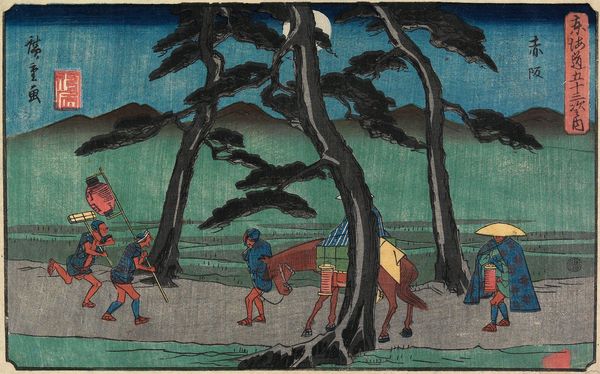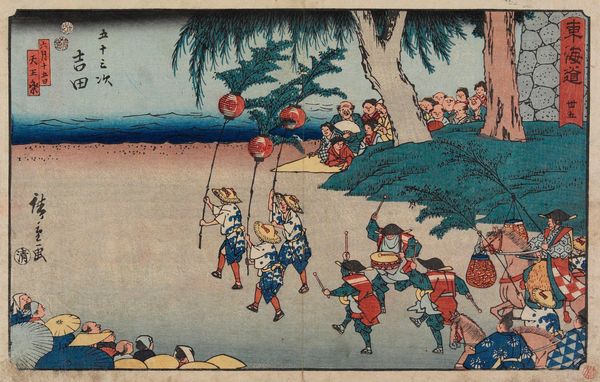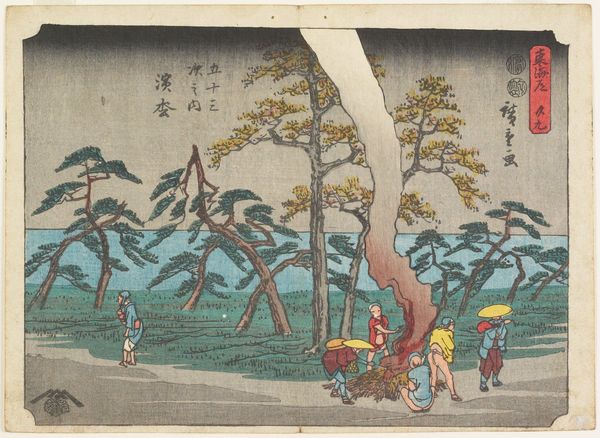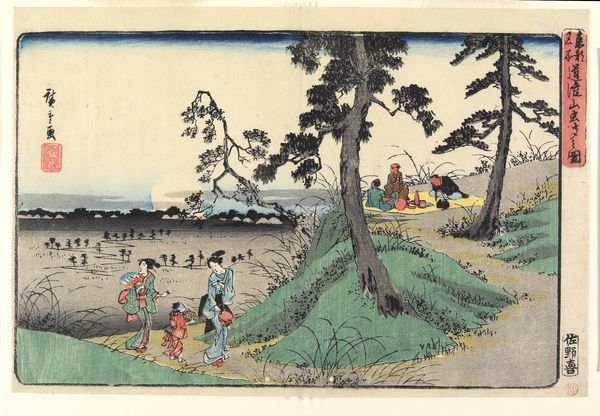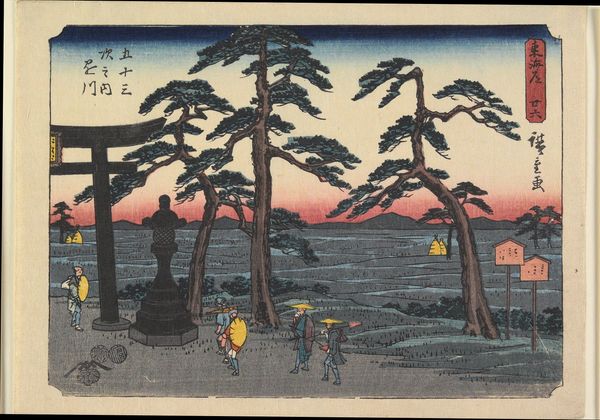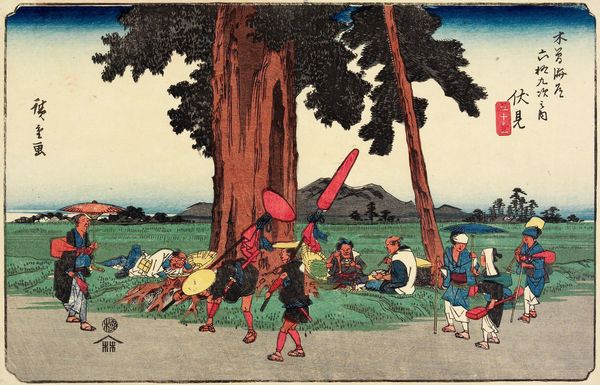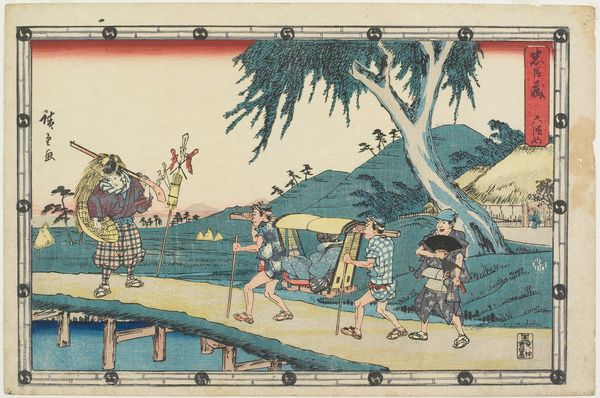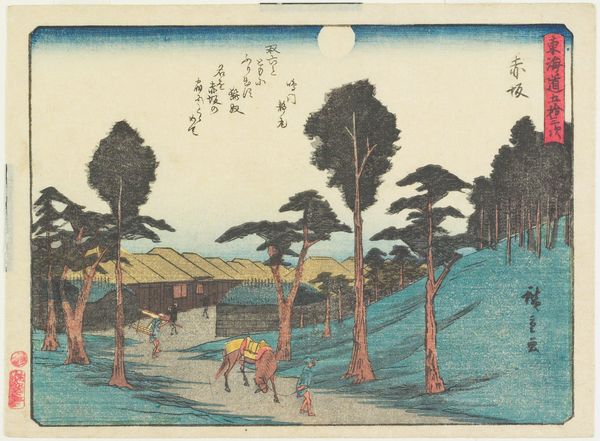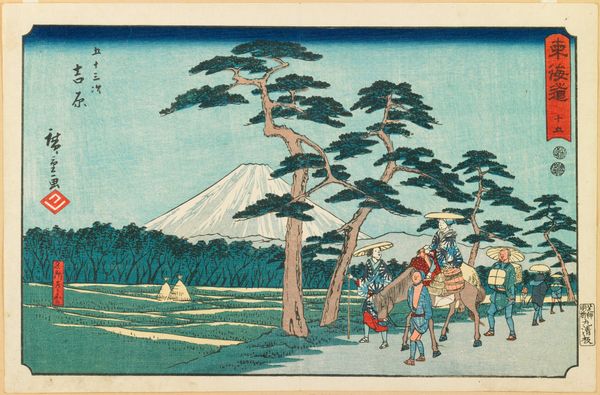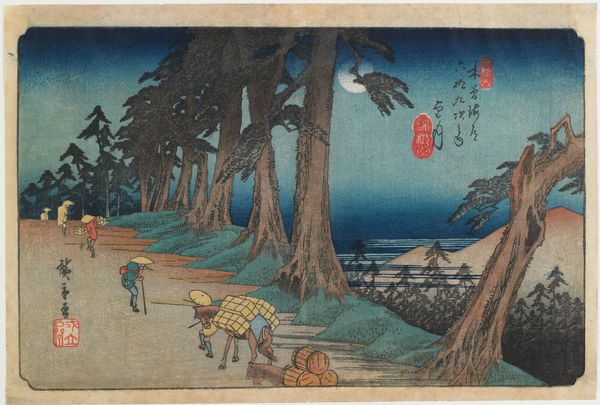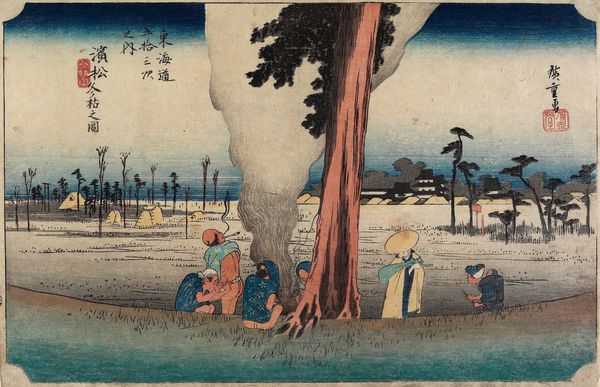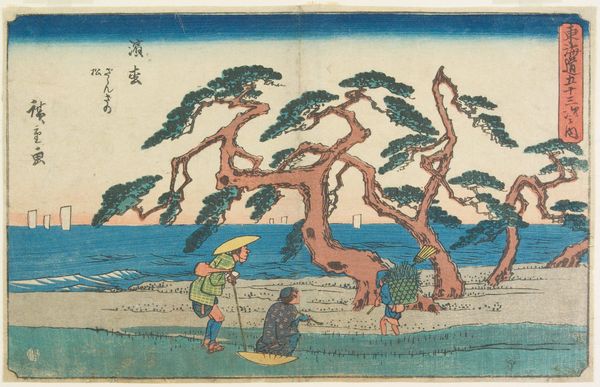
print, ink, woodblock-print
# print
#
landscape
#
ukiyo-e
#
japan
#
ink
#
woodblock-print
#
orientalism
#
genre-painting
#
watercolor
Dimensions: 7 13/16 x 12 3/8 in. (19.8 x 31.4 cm) (image)
Copyright: Public Domain
Curator: Utagawa Hiroshige's woodblock print, titled "Akasaka," from 1841 to 1842, now at the Minneapolis Institute of Art, immediately evokes a specific mood, doesn't it? Editor: Indeed. There's an unmistakable atmospheric quality. The stark contrast between the dark trees and the lighter horizon lends it a melancholic, almost eerie air. The materiality of the woodblock print contributes, of course; the ink soaking into the paper creates a palpable texture. Curator: The composition directs our gaze cleverly. Note how the towering pine trees frame the human figures, guiding the eye to follow their journey along what seems like a bustling nighttime path. The scene relies heavily on linear perspective, albeit stylized, creating a deep sense of space. Editor: But consider the socio-economic context, too. These figures are carrying lanterns, likely engaging in commerce or transportation. Woodblock prints weren’t just artistic endeavors but vital means of circulating information and stories among the masses. This wasn't high art exclusively, but mass production reflecting societal movement and labor. Curator: Agreed, but I'm drawn to the symbolic density. The moon, subtly rendered in the upper background, offers a touch of romanticism that interacts powerfully with the earth-bound procession below. The indigo shades for sky and water lend a certain unity, echoed by touches in the travellers' clothing. Editor: Right, and it’s worth investigating the print-making process itself. Hiroshige and his block carvers and printers were artisans. The final artwork required collaboration, and an examination of these material and working conditions reveals much about the status of labor during that period in Japan. We get this beautiful final result through very physical means. Curator: Absolutely. And, the stylistic execution enhances the content. Hiroshige’s careful blending of colors, particularly within the gradation of the sky, suggests meticulous craftmanship, contributing to the dreamlike visual field that the landscape engenders. Editor: For me, this work illuminates the integration of art within broader structures of labor and industry. It demonstrates the importance of investigating the physical and collaborative nature behind these artifacts we so admire today. Curator: Ultimately, considering the balanced design elements with Hiroshige's chosen thematic features, "Akasaka" provides insight into 19th-century Japanese culture, both aesthetically and emotionally. Editor: A perfect nexus between social reflection and creative rendering, revealing truths through process and perspective.
Comments
No comments
Be the first to comment and join the conversation on the ultimate creative platform.

